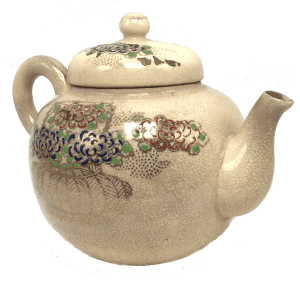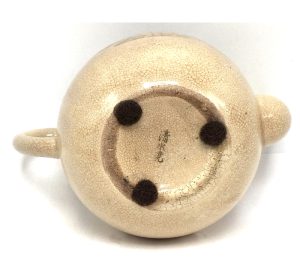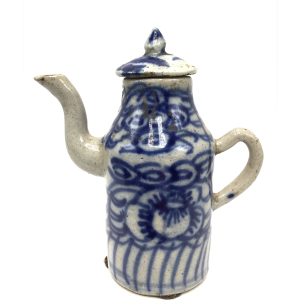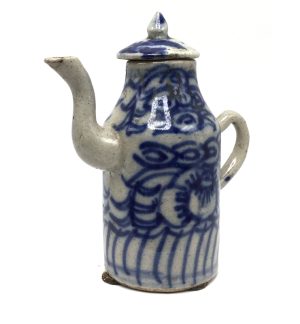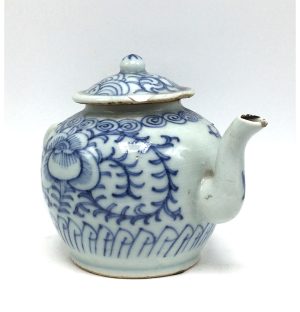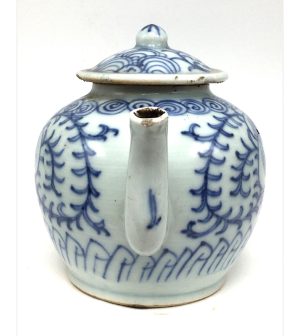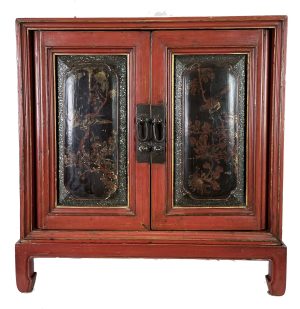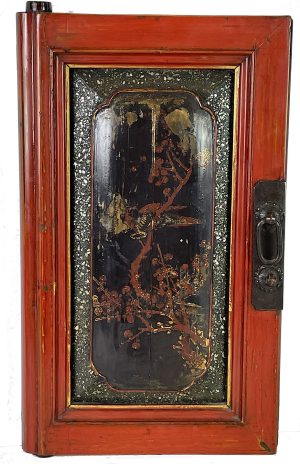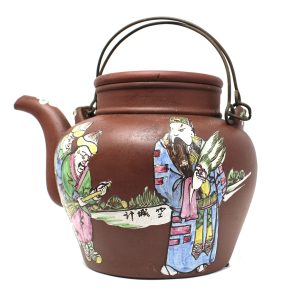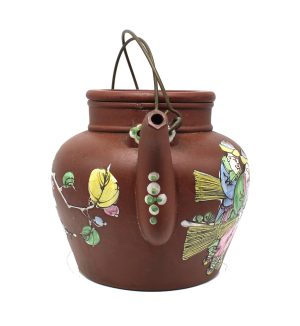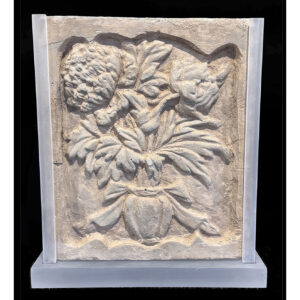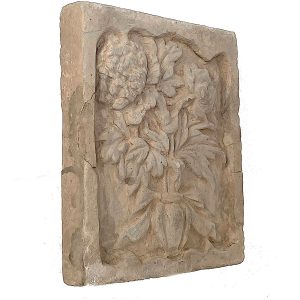-
Sale!


$285.00 Original price was: $285.00.$225.00Current price is: $225.00.
H: 4” W: 5.25” D: 3.5” | FREE SHIPPING WITHIN CONTINENTAL U.S.
Hand thrown and -painted Meiji single serving Kyo Ware teapot with luminescent crackled glaze and kiln seal. A chrysanthemum in a basket symbolizes longevity and rejuvenation. Kyo ware is limited, making it collected worldwide.
-
Sale!


$135.00 Original price was: $135.00.$95.00Current price is: $95.00.
H: 5.25″ W: 4.625″ D: 2.375″ | FREE SHIPPING WITHIN CONTINENTAL U.S.
Charming miniature pitcher probably used in a restaurant or home kitchen as a dispenser for soy sauce, oils or other liquids. Elegant shape, covered with chrysanthemums, plantain leaves and bindweed vines with lotus bud on top.
-
Sale!


$175.00 Original price was: $175.00.$115.00Current price is: $115.00.
H: 5.25” W: 4.75” D: 2.375” | FREE SHIPPING IN CONTINENTAL US
Small teapot with intricate cobalt blue chrysanthemum and bindweed designs widely used in late 19th century in domestic and export wares. Ball handle on lid.
-
Sale!


$450.00 Original price was: $450.00.$325.00Current price is: $325.00.
H: 22 ” W: 21.5 ” D: .12.25 ” | FREE SHIPPING WITHIN CONTINENTAL U.S.!
Small Fujian elm cabinet made for the China’s new wealthy merchant class in 18-1900s . Red lacquer with auspicious symbols for the Five Happinesses: health, wealth, longevity, virtue and a peaceful death. Were often gifts for newlyweds as desire for double happiness and fruitful marriage with sons.
-
Sale!


$975.00 Original price was: $975.00.$695.00Current price is: $695.00.
H: 6” W: 8.5” D: 6.125” | FREE SHIPPING IN CONTINENTAL U.S.
Rare Yixing teapot with brown wash, bright painted enamel scene from Peking opera. Floral are wish for long and healthy life, perfect metaphor for sharing tea loved ones. Kiln seals in body, bottom, lid. For decoration only.
-


$995.00
H: 11” W: 9.5” D: 1.65” | FREE SHIPPING
This earthenware brick tile bordered with a deep scalloped frame depicts a vase with a bouquet of propitious flowers: a chrysanthemum and a peony wrapped with an elegant ribbon. Tiles like this were made to decorate the large numbers of buildings created during the prosperous Song dynasty and to adorn tombs. This elegant brick is in good condition for its age with expected chips and cracks, some restoration of background and a re-glued frame break on each side. It has earth adherents from its burial in a tomb.
End of content
End of content

